Miniature Magical Stela Of God Horus-Child Standing On Crocodiles Protected Against Wild And Poisonous Creatures
A. Sutherland - AncientPages.com - The place of origin of this miniature basalt stela is unknown.
This type of amulet as a 'stela' was prevalent in the late and Ptolemaic-Roman periods. It was used as amulets, healing and protecting properties against wild animals and other harmful creatures.
 A Stela of Horus-Child standing on crossed crocodiles. Image credit: H.S.K.Bakry
A Stela of Horus-Child standing on crossed crocodiles. Image credit: H.S.K.Bakry
In ancient Egyptian myths, the goddess Isis raised his child Horus and had to hide in the marshes from his enemy, Seth.
Cippi (magical stelae) represent Horus's healing from poisonous scorpion stings and snakebites in the marshes. Egyptians believed a liquid poured over a magical stela could absorb and transfer the power of the stela's spells and images to the worshipper.
They appeared in Egypt during the 18th Dynasty (ca. 1550-1295 BC) and were continuously used until the Roman Period.
Miniature basalt stela showing Horus-the-child is an example of this kind of art, generally known as 'Horus cippi' (Horus Stelae). On its front side is a depiction of the god Horus as a child standing on the backs of two crossed crocodiles.
The god Bes-mask is above Horus' head, which is badly damaged on this particular stela. In his right hand, he holds two serpents, a scorpion and an antelope. In his left hand are two snakes, a scorpion and a lion. All these figures are carved in bas-relief.
 Cippus of Horus on the Crocodiles, 3rd century B.C.E. Steatite, 9 1/8 x 5 5/16 x 2 3/16 in. (23.2 x 13.5 x 5.6 cm). Brooklyn Museum
Cippus of Horus on the Crocodiles, 3rd century B.C.E. Steatite, 9 1/8 x 5 5/16 x 2 3/16 in. (23.2 x 13.5 x 5.6 cm). Brooklyn Museum
On the stela's right side, we recognize the falcon of Horus standing on a papyrus flower: the falcon is wearing a two-feathered crown and on the left is a papyrus plant surmounted by a double plume.
The amulet's front side is also decorated with demons, deities, and magical figures. The reverse side of the stela is covered with four columns of incised hieroglyphic inscription.
Most Horus stelae are portable amulets. This stela-amulet is very small (h: 8.7 cm, w: 5.1 cm, d: 2.3 cm), but many others were available in various sizes.
Archaeologists discovered hundreds of similar examples of Horus stelae, made of various materials including stone, marble, wood, and faience. Inscribed with magical or /and religious text, they vary in size.
Written by - A. Sutherland - AncientPages.com Senior Staff Writer
Copyright © AncientPages.com All rights reserved. This material may not be published, broadcast, rewritten or redistributed in whole or part without the express written permission of AncientPages.com
Expand for referencesReferences:
Draycott J. Size matters: Reconsidering Horus on the crocodiles in miniature
Bakry, H. S. K. "A STELA OF HORUS STANDING ON CROCODILES FROM THE MIDDLE DELTA." Rivista Degli Studi Orientali 42, no. 1 (1967): 15-18.
More From Ancient Pages
-
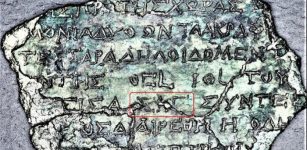 Humans Have Been Predicting Eclipses For Thousands Of Years, But It’s Harder Than You Might Think
Archaeology | Apr 20, 2023
Humans Have Been Predicting Eclipses For Thousands Of Years, But It’s Harder Than You Might Think
Archaeology | Apr 20, 2023 -
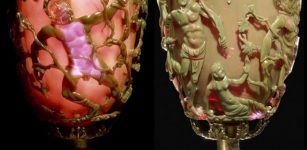 The Lycurgus Cup: Fascinating Artifact That Reveals Prehistoric Knowledge Of Nanotechnology
Ancient Technology | Aug 2, 2018
The Lycurgus Cup: Fascinating Artifact That Reveals Prehistoric Knowledge Of Nanotechnology
Ancient Technology | Aug 2, 2018 -
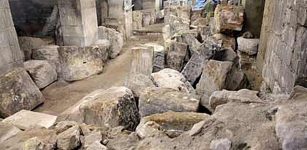 Archaeologists Excavate Two Roman Bath Hidden In A Dark Passage Below The Streets Of Bath
Archaeology | Apr 26, 2016
Archaeologists Excavate Two Roman Bath Hidden In A Dark Passage Below The Streets Of Bath
Archaeology | Apr 26, 2016 -
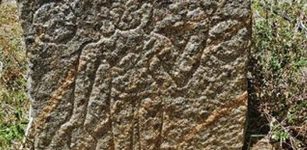 500-Year-Old Vaishnava Saint Sculptures Discovered
Archaeology | Oct 15, 2015
500-Year-Old Vaishnava Saint Sculptures Discovered
Archaeology | Oct 15, 2015 -
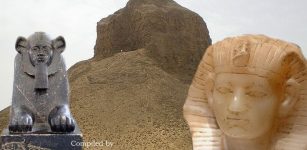 The Black Pyramid Of Amenemhat III – Mysterious Underground Chambers And Lost Ancient Treasures
Featured Stories | Aug 9, 2021
The Black Pyramid Of Amenemhat III – Mysterious Underground Chambers And Lost Ancient Treasures
Featured Stories | Aug 9, 2021 -
 The Knap Of Howar: One Of The Oldest And Well-Preserved Neolithic Complexes Orkney, Scotland
Featured Stories | Mar 2, 2017
The Knap Of Howar: One Of The Oldest And Well-Preserved Neolithic Complexes Orkney, Scotland
Featured Stories | Mar 2, 2017 -
 Little Known History Of Amazon’s Ashaninka People Studied By Researchers
Archaeology | Mar 21, 2023
Little Known History Of Amazon’s Ashaninka People Studied By Researchers
Archaeology | Mar 21, 2023 -
 Ancient Romans Invented The First Bound Book
Ancient History Facts | Sep 25, 2017
Ancient Romans Invented The First Bound Book
Ancient History Facts | Sep 25, 2017 -
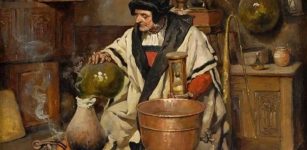 Eugenio De Torralba – Renaissance Magician’s Dangerous Spirit Communications
Featured Stories | May 6, 2019
Eugenio De Torralba – Renaissance Magician’s Dangerous Spirit Communications
Featured Stories | May 6, 2019 -
 Charles VI Of France – The King Who Was Made Of Glass
Featured Stories | Jan 22, 2016
Charles VI Of France – The King Who Was Made Of Glass
Featured Stories | Jan 22, 2016 -
 Unexplained Ancient Wars In America – Strange Physical Evidence – Part 2
Featured Stories | Oct 4, 2020
Unexplained Ancient Wars In America – Strange Physical Evidence – Part 2
Featured Stories | Oct 4, 2020 -
 DNA From 3,800-Year-Old Individuals Sheds New Light On Bronze Age Families
Archaeology | Aug 29, 2023
DNA From 3,800-Year-Old Individuals Sheds New Light On Bronze Age Families
Archaeology | Aug 29, 2023 -
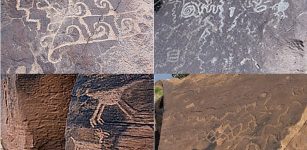 Lyman Lake Petroglyphs And Famous Kokopelli-Flute Player Left By Ancestors Of The Hopi Indians
Civilizations | Nov 26, 2018
Lyman Lake Petroglyphs And Famous Kokopelli-Flute Player Left By Ancestors Of The Hopi Indians
Civilizations | Nov 26, 2018 -
 Ancient Miracle Man Possessed Extraordinary Levitation And Telepathic Abilities That Shocked People
Featured Stories | Jun 21, 2018
Ancient Miracle Man Possessed Extraordinary Levitation And Telepathic Abilities That Shocked People
Featured Stories | Jun 21, 2018 -
 Oldest Golden Jewel In The Caucasus Unearthed In Azerbaijan
Archaeology | Dec 25, 2017
Oldest Golden Jewel In The Caucasus Unearthed In Azerbaijan
Archaeology | Dec 25, 2017 -
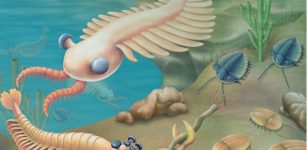 Connection Between Viruses And Ancestors Of All Complex Life Has Been Found
Archaeology | Jul 1, 2022
Connection Between Viruses And Ancestors Of All Complex Life Has Been Found
Archaeology | Jul 1, 2022 -
 Aristotle’s Influence On Education Of Alexander The Great – Historical Encounter Of Two Famous Men
Featured Stories | Dec 24, 2018
Aristotle’s Influence On Education Of Alexander The Great – Historical Encounter Of Two Famous Men
Featured Stories | Dec 24, 2018 -
 Tracing Footsteps Of Giants In Africa – Obscure Past Of Mzoura Stones
Civilizations | Oct 18, 2015
Tracing Footsteps Of Giants In Africa – Obscure Past Of Mzoura Stones
Civilizations | Oct 18, 2015 -
 What Was The Extreme Ritual Of Sokushinbutsu?
Ancient Traditions And Customs | Jun 20, 2018
What Was The Extreme Ritual Of Sokushinbutsu?
Ancient Traditions And Customs | Jun 20, 2018 -
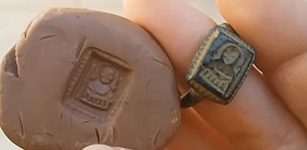 Remarkable Intact 700-Year-Old Ring With Image Of St. Nicholas Found In Jezreel Valley, Israel
Archaeology | Mar 6, 2018
Remarkable Intact 700-Year-Old Ring With Image Of St. Nicholas Found In Jezreel Valley, Israel
Archaeology | Mar 6, 2018
